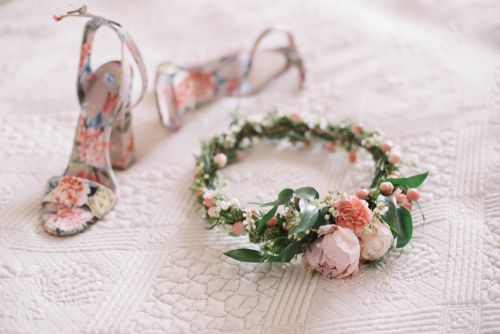 Let’s face it: Wedding flowers are expensive. And while you don’t technically need them to get married, they add a little something extra in both décor and atmosphere. Fortunately, you don’t have to forgo flowers entirely or sacrifice something else in your budget. This guide offers several useful tips for getting out-of-this-world flowers without astronomical prices.
Let’s face it: Wedding flowers are expensive. And while you don’t technically need them to get married, they add a little something extra in both décor and atmosphere. Fortunately, you don’t have to forgo flowers entirely or sacrifice something else in your budget. This guide offers several useful tips for getting out-of-this-world flowers without astronomical prices.
Understand Average Flower Costs
Saving money on flowers is a wise move at any time of year. Before you crunch the numbers, you should know the average prices for most arrangements. Heather Lee and Elizabeth Mitchell break these costs down in a Brides article:
- Bride’s bouquet: $250
- Bridesmaid bouquet: $80
- Boutonniere: $20
- Corsages: $25 to $30
- Flower girl’s petal basket: $25
Beyond the wedding party and family, other flower arrangements can get pricier. Head table flowers can cost up to $1500. Meanwhile, reception table centerpieces could run as high as $600 each. Flowers comprise about 8% of the average event budget. With a $10,000 budget, that works out to around $800. The Knot’s Sarah Hanlon estimates that most couples pay $2,000 or more on their arrangements. You could shell out a lot of money.
Prioritize Your Wedding Party
While site décor makes an impact on your guests, your wedding party’s flowers will probably get more attention. To get more bang for your buck, limit expensive accouterments like large statement blooms and intricate arrangements to bouquets, corsages, and boutonnieres. You can take a similar approach when it comes to your parents’ flowers. Such eye-catching details can make them feel a little extra special.
Green Up Your Arrangements
The Spruce’s Nina Callaway mentions that herbs tend to be less expensive than traditional flowers. Varieties like lavender, sage, rosemary, and mint are affordable choices for beautifying your space. As a bonus, their wonderful aromas can please your guests and help set the mood for your event. Your wedding doesn’t have to be rustic-themed to use these fragrant additions. The Knot shows many different types of beautiful herb/flower pairings.
Most greenery is also less costly and adds panache to bouquets, centerpieces, and more. Typical choices include baby’s breath and Queen Anne’s lace. But less common options like ferns, olive leaves, and eucalyptus are also available most of the year. Check with your florist for other great options.
Go With Seasonal Flowers
Logic dictates that in-season blooms price lower than those out of season. Getting seasonal flowers is easier since they’re more readily available. Your florist also won’t pay premium prices for varieties in short supply. The Knot’s guide lists ideal selections for spring, summer, fall, and winter. Some, like roses and dahlias, are excellent multi-season options. If you choose a florist that sources local blooms, you could pay even less.
Consider Inexpensive Alternatives
Lower-priced flowers can look just as stunning without breaking the bank. Callaway remarks that monochromatic themes and tightly packed arrangements create elegant and opulent looks. Lauren Kay mentions in The Knot that many expensive flowers have less costly look-alikes. For instance, hydrangeas look similar to sweet peas.
Add Non-Floral Details
You can slash your wedding flower costs by swapping some décor for non-floral alternatives. Callaway lists several examples in her piece for The Spruce. Candles and lanterns are popular choices – their light can set the mood and make any space look lovely. More couples are adding fruits and veggies to their arrangements – and you can get seasonal with your selections as well. Non-floral options also work well in bouquets, boutonnieres, and corsages – think feathers, ribbons, sparkly beads, and even brooches.
Slimming down your wedding flower costs is an admirable goal. You can use expensive flowers sparingly. Seasonal blooms, greenery, herbs, and non-floral décor are other great ways to stretch your budget. With these helpful hints, you don’t have to trade style for economy.